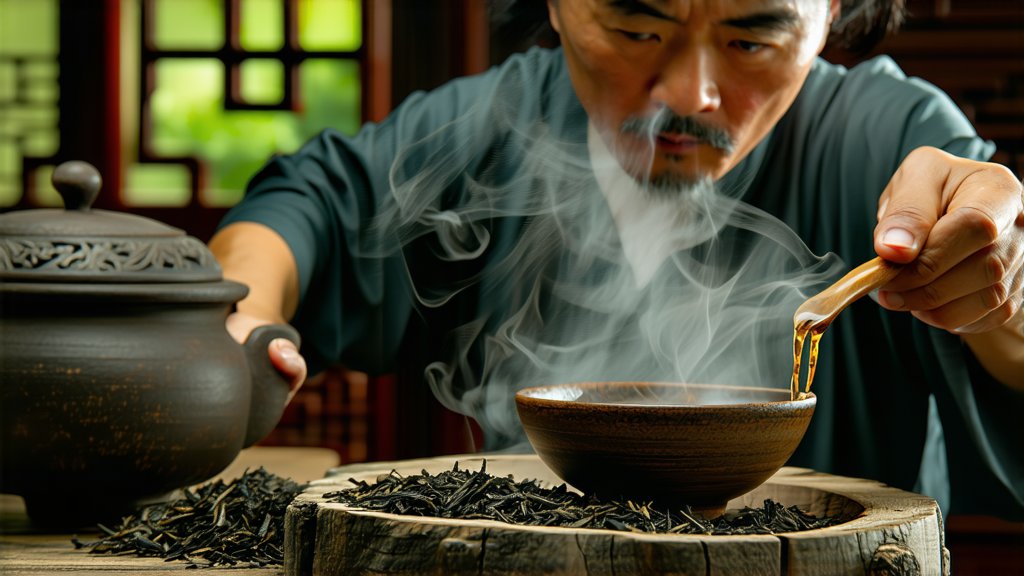
Pu-erh tea, a unique variety within the broad category of Chinese black teas, is a testament to the rich history and diverse traditions of Chinese tea culture. This article delves into the fascinating world of Pu-erh, exploring its origins, types, production processes, and the art of appreciation.
History of Pu-erh Tea
Pu-erh tea has a storied history that dates back to the Han Dynasty, over 2,000 years ago. It is named after the ancient trading town of Pu'er in Yunnan Province, which was a crucial hub for tea distribution along the ancient Tea Horse Road. The tea was originally compressed into bricks, discs, or other shapes for ease of transport and preservation, a practice that continues today.
Types of Pu-erh Tea
Pu-erh tea is categorized into two main types based on the fermentation process: Sheng (raw) and Shou (ripe).
-
Sheng Pu-erh: This type undergoes a natural fermentation process that can last for decades, gradually maturing and changing in flavor. Sheng Pu-erh is known for its initial astringency and the potential to develop into a complex, smooth, and sweet taste over time.
-
Shou Pu-erh: Shou Pu-erh is artificially fermented, a process that accelerates the maturing process, making it ready to drink much sooner than Sheng Pu-erh. It is characterized by its earthy, sweet, and mellow flavors.
Crafting Pu-erh Tea
The production of Pu-erh tea is a meticulous process that involves several stages:
-
Picking: Only the tender leaves and buds are selected, typically from ancient tea trees in Yunnan.
-
Killing Green: The leaves are heated to stop the oxidation process, similar to other black teas.
-
Rolling and Shaping: The leaves are rolled to break down the cell walls, allowing for better fermentation. They are then shaped into various forms such as cakes, bricks, or tuo cha (bird's nest shape).
-
Fermentation: For Shou Pu-erh, a controlled fermentation process using microbial activity is applied. Sheng Pu-erh, on the other hand, relies on the natural environment for slow fermentation.
-
Aging: Both types of Pu-erh can be aged, with Sheng Pu-erh benefiting the most from this process as it allows the tea to develop a rich, complex flavor profile.
Appreciating Pu-erh Tea
The art of appreciating Pu-erh tea is a sensory journey that involves several steps:
-
Preparation: Pu-erh is often broken into small pieces and placed in a teapot or gaiwan, a traditional Chinese lidded bowl used for brewing tea.
-
Rinsing: The tea is rinsed with hot water to remove any dust or impurities, and this first infusion is usually discarded.
-
Brewing: Hot water is poured over the tea leaves and allowed to steep for a specific time, which can vary depending on the type and age of the Pu-erh.
-
Tasting: The brewed tea is sipped slowly to appreciate its aroma, color, and flavor. Pu-erh is known for its earthy, woody, and sometimes floral or fruity notes.
-
Multiple Infusions: Pu-erh can be brewed multiple times, with each infusion revealing different aspects of the tea's character.
Health Benefits
Pu-erh tea is revered for its potential health benefits, which include aiding digestion, reducing cholesterol, and even weight management due to its metabolism-boosting properties. The fermentation process also contributes to its high levels of antioxidants.
Cultural Significance
Pu-erh tea is more than just a beverage; it is a cultural artifact that reflects the history, tradition, and philosophy of China. The aging and transformation of Pu-erh mirror the concept of time and change in Chinese culture, making it a symbol of wisdom and patience.
In conclusion, Pu-erh tea is a complex and fascinating aspect of Chinese tea culture. Its unique fermentation process, diverse flavors, and potential health benefits make it a treasured part of the global tea community. For those interested in exploring the depths of tea, Pu-erh offers a journey through time and taste that is both rewarding and enlightening.